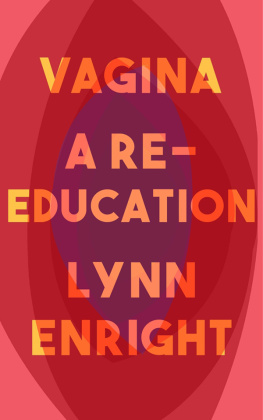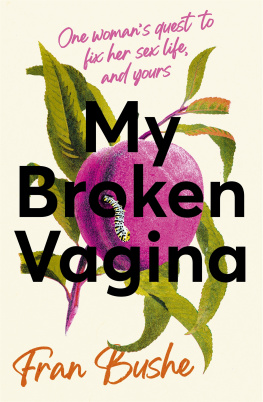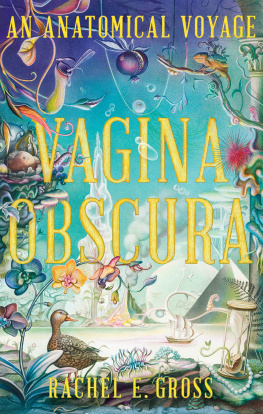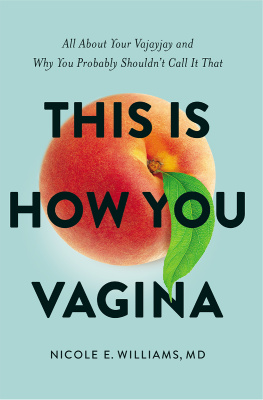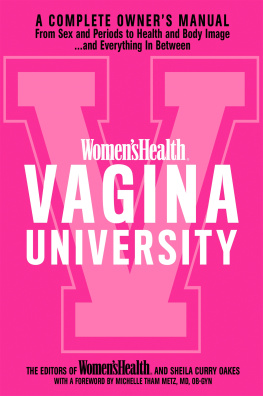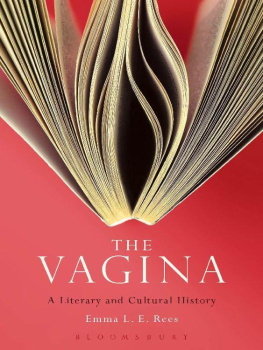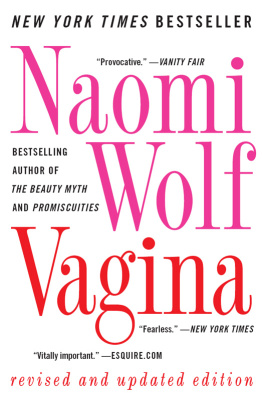Contents
Guide
VAGINA
Vagina
A RE-EDUCATION
Lynn Enright

First published in Great Britain in 2019 by Allen & Unwin
Copyright Lynn Enright, 2019
The moral right of Lynn Enright to be identified as
the author of this work has been asserted by her in accordance with the Copyright, Designs and Patents Act of 1988.
All rights reserved. No part of this book may be reproduced or transmitted in any form or by any means, electronic or mechanical, including photocopying, recording or by any information storage and retrieval system, without prior permission in writing from the publisher. The Australian Copyright Act 1968 (the Act) allows a maximum of one chapter or 10 per cent of this book, whichever is the greater, to be photocopied by any educational institution for its educational purposes provided that the educational institution (or body that administers it) has given a remuneration notice to the Copyright Agency (Australia) under the Act.
Every effort has been made to trace or contact all copyright holders.
The publishers will be pleased to make good any omissions or rectify any mistakes brought to their attention at the earliest opportunity.
The extract from Dance Nation by Clare Barron
(Oberon Books, 2018) which appears on is reproduced by
kind permission of Oberon Books.
The extract from Metaphors, taken from Collected Poems by
Sylvia Plath (Faber and Faber Ltd, 2002) which appears on is reproduced by kind permission of Faber and Faber Ltd.
Allen & Unwin
83 Alexander St
Crows Nest
NSW 2065
Australia
Phone: (61 2) 8425 0100
Email: info@allenandunwin.com
Web: www.allenandunwin.com
A CIP catalogue record for this book is available
from the National Library of Australia.
Internal design by Patty Rennie
Trade paperback ISBN 978 1 91163 001 2
E-Book ISBN 978 1 76087 086 7
For my mother, Ann,
and my sisters, Ailbhe and Daire
CONTENTS
Introduction
I think its the worst thing we do to each other as women, not share the truth about our bodies and how they work.
Michelle Obama, Good Morning America,
ABC News, 2018
Its very underneathness means the vagina can be overlooked. Not by the individual, of course: the pulsing of arousal, the monthly arrival of blood, the sticky discharge, the changing smells, the unarguable fact that it is the site of new life all that means that a woman is never unaware of her vagina. But perhaps due to its position, discreetly tucked away; or perhaps due to hundreds of years of society controlling womens bodies; or, most likely, due to a combination of factors there is a secrecy surrounding the vagina that afflicts women generally.
As girls we are told, sensibly of course, that it is a private place; we are urged, really, to ignore it. We call it a front bottom, a chirpy if deceitfully vague moniker, and we talk no more of it until its time for periods and pregnancy prevention.
There is a fear, it seems, that by presenting a girl with the facts, she will be empowered. And there is sometimes a sense, felt by girls or young women, that they should not be allowed access to that power. I remember as a twelve-year-old hearing that it would be useful to look at my own vagina with a hand mirror. The suggestion came from a representative of Tampax who had come to give a talk at school, and all through the assembly hall echoed murmurs of disgust and ridicule, girls displaying an aversion to the suggestion, signalling to each other that they were horrified at the thought of being so intimate with their own bodies. That night, though, initially compelled because I was the type of studious child who always did her homework, I took a hand mirror the one that usually sat on the windowsill of my parents en suite bathroom and I looked down there. The jolt of arousal was too much; I retreated almost immediately, throwing the mirror aside and pulling up my knickers, depriving myself.
I had been seeking out a biological understanding and, instead of that, or certainly alongside that, I had happened upon a deeply erotic experience. Rather than enjoying that undeniable and pleasurable arousal, I was scared: scared of the end of childhood; scared of the new sensation; scared of the possibility of enjoying my sexuality. To masturbate was shameful, something that boys did, not girls, and so I didnt. Not that evening.
Of course, this is just my experience; other girls probably have different memories of the day that they were urged to look at themselves with a hand mirror. Maybe some were able to appraise their vaginas with a dispassionate and scientific eye; maybe others were able to just get on with masturbating, unperturbed by squeamishness, ignorance and the echoing murmurs of disgust. Each girl and woman has a personal and subjective relationship with her vagina and her sexuality. However, what I think is common is that she exists in a society that discourages her from looking underneath too often; she exists in a society where misinformation about the vagina is rife, where womens sexuality is discouraged and shamed.
It starts early, with the sex education that most of us receive, where there is an emphasis on mens orgasms and male ejaculation. Obviously, when educating teenagers, preventing pregnancy is key, but I remember learning a lot about wet dreams and wet dreams are about as useless as it gets in terms of procreation. As a young teenager, I was under the impression that boys woke up in sodden sheets each and every morning with dream bubbles featuring topless women floating above their heads. Meanwhile, girls orgasms or pleasure were never discussed. Basically, in a lot of sex education, the male orgasm is pretty much framed as the point of sex and vaginas are there as a sort of receptacle. And that focus on the male orgasm leads to a situation where girls and boys see male sexuality as more important, more dominant than female sexuality.
This misinformation isnt just about attitudes or the way we talk to young people about sex, its actually right there in the biology too; its present in the facts we tell people about sex. Close your eyes and conjure up a vagina. Imagine the vagina as represented in one of those anatomical diagrams you once saw in a science or sex ed book. Have you done it? Yes, well thats not what a vagina looks like. Those drawings are inaccurate. They misinform us. They tell us that the labia are symmetrical, when they very rarely are; they depict the vagina the inner passage as a sort of open tube (just waiting for a penis perhaps?) when actually the walls touch each other; they illustrate the clitoris as a button without including the crucial clitoral shaft and crura (legs) that extend beyond the visible nub. They have it wrong.
And thats not where the misinformation ends. Rarely seen in diagrams, but often discussed in relation to young womens vaginas, is the hymen. There is a reason it is not included in diagrams: the hymen that supposed cling film-like covering that is broken when a girl or woman has sex for the first time doesnt actually exist in the way we have been told it does. The notion of the hymen isnt erroneous, but it is usually a crescent or ring consisting of folds of membrane that sits slightly inside the vagina. What it looks like and how thick it is differs greatly from woman to woman, vagina to vagina; and for a small minority, it could make intercourse painful or impossible. Crucially, however, it does not contrary to common belief act as a kind of seal and it is not broken. Those descriptions of the hymen are nothing more than a misogynistic desire to control young womens sexuality by making their virginity a sort of countable, testable commodity.

